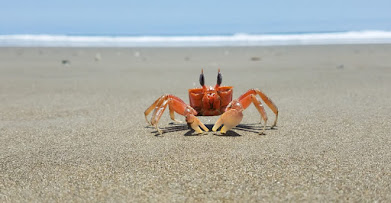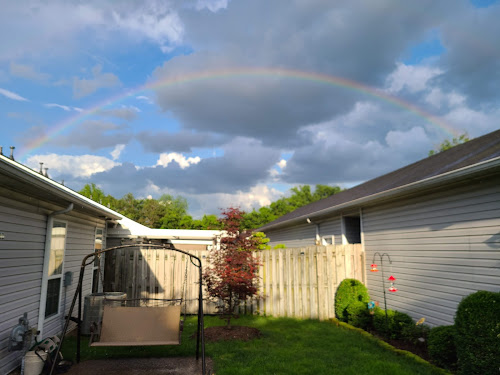 |
| Celebrating the presidential election results. |
I started researching the possibility of living in Ecuador in September 2019. At the time, I had been traveling solo through Central and South America for an entire year and had begun to make a list of the pros and cons of living in Latin America. Having already explored all 50 U.S. States and almost 100 countries around the world over the past 25 years, I have a pretty good sense of how to discern what I like and don’t like about a place and identify where would make a good home. I also had already decided that I no longer wanted to live in the United States at this point in my life, so I was open to all the possibilities. Ecuador checked off a lot of boxes on my list.
As a tourist with a U.S. passport, you can visit Ecuador for 90 days in a 365 day period without needing a visa. You’ll just get a standard stamp in your passport, and the immigration officer will handwrite the number 90 over the stamp. Those 90 days are cumulative, so if you leave the country for a few days or weeks after your first entry, the clock stops, and your time outside Ecuador does not count toward your total. However, unlike some other countries in the region, the clock does not reset when you reenter the country.
For example, you fly into Ecuador for the first time on January 1 and travel around the country for an entire month. Then you cross into neighboring Colombia and spend a month there. When you reenter Ecuador on March 1, you still have 59 days remaining (of your original 90). If you want to stay longer than that, you can apply at one of the Apoyo Migratorio offices for an extension on your tourist “visa." I ended up doing this in both 2019 and 2020; each time it cost me $131. This extension, called a prórroga, is valid for another 90 days, but this time it is a consecutive 90 days, meaning the clock does not stop if you leave the country during that time. Continuing with this example, your prórroga, which would have started on April 30 (your 91st day in Ecuador) is valid through July 29.
So now you’ve enjoyed 180 days (half a year!) in Ecuador and you’ve decided you want to stay even longer. There is one more extension you can get as a tourist, and it is valid for an additional 180 days. However, you must apply 30 days in advance of the expiration of your prórroga, you must have a health insurance policy issued by an Ecuadorian provider, and you must provide proof of sufficient funds to cover your stay. The government fee for this extension is $450. Note that you can only apply for this 180-day extension once every five years.
But what if you want to actually live in Ecuador? You’ll have to apply for a temporary residency visa. If you click on the link, which directs you to the Ministry of Exterior Relations website, you will see that there are more than 30 options for this type of visa. But the reality is that unless you are in Ecuador as a student, on a work or volunteer contract, or in some other very specific capacity, then you would only qualify for less than a handful of these visas. And while that aforementioned website does list the requirements for each type of visa, you will not find a government-issued how-to-apply guide anywhere.
I already knew from my thorough online research and reading posts in expat community groups on Facebook that, while it is possible to go through the visa application process on your own, there are many steps that are challenging to accomplish even in non-pandemic times. So I started contacting immigration attorneys who specialize in helping U.S. citizens obtain Ecuadorian residency. By the end of 2019 I had narrowed my list down to two attorneys based on their responsiveness and thoroughness in answering my questions via email and also based on the testimonials of other expats who had retained their services. I also contacted the Consulate of Ecuador in Atlanta, GA to verify the required documents and costs to decide if I could reasonably go through the process on my own.
I returned to the U.S. in January 2020 to finalize my divorce and to start preparing to file for my visa. Based on my previous communications with the attorneys and the consulate, I knew that I would have to complete this legal process and change my residence address before I applied, as all of your official documents need to have the same surname and mailing address. For the 16 months I was out of the country, I had been using my now ex-husband’s address in Portland, OR, plus my Oregon-issued driver license was going to expire in July. So I decided to "relocate" to Nashville, TN, to be closer to my family. My grandmother’s house would be my new, albeit temporary, residence for legal purposes.
By the time the divorce had been filed, all of the address changes had taken effect, and I had my new Tennessee driver license (issued on March 20, 2020), the world was in lockdown mode.



















































